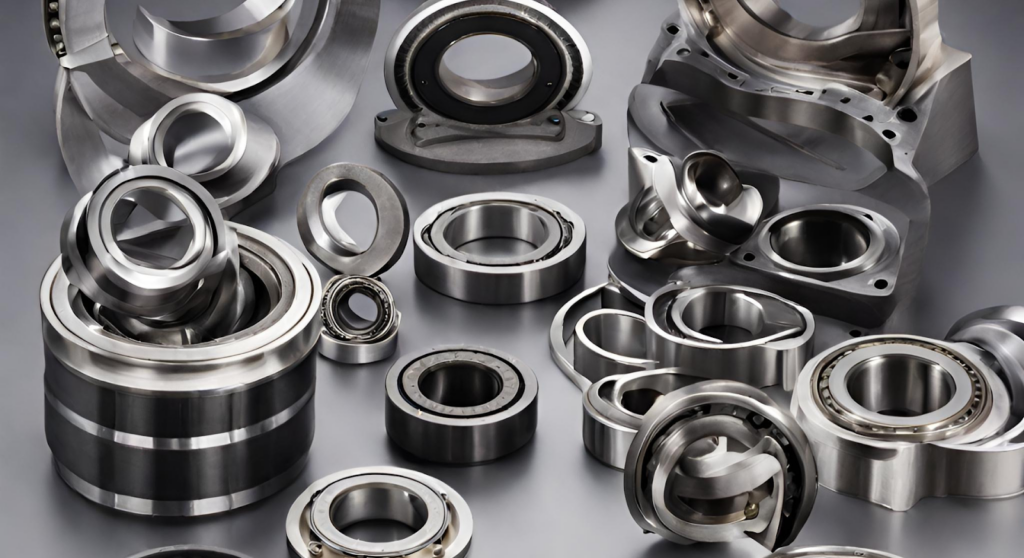Do clutch release bearing designs impact performance? Are some designs better than others? Choosing the right mechanism matters.
Different clutch release bearing mechanisms offer varying performance. Knowing the designs helps optimize power transfer. Select the best design for your needs.
Let’s explore how clutch release bearing mechanism[^1]s affect performance. I will share insights based on my experiences in mechanical design. I’ll cover three designs you should know.
What is a Clutch Release Bearing Mechanism?
What exactly is a clutch release bearing mechanism? What does it do? Understanding the basics is essential.
En clutch release bearing mechanism[^1] engages and disengages the clutch. It transfers force from the pedal to the clutch fingers. It’s a vital part of the manual transmission system.
En clutch release bearing mechanism[^1], also known as the throw-out bearing mechanism, plays a critical role in a manual transmission. Its main job is to engage and disengage the clutch.
This allows the driver to shift gears smoothly. When the driver presses the clutch pedal, the mechanism pushes the release bearing against the clutch fingers.
This process relieves pressure on the clutch disc and disconnects engine from transmission.
The design of this mechanism can affect the speed and precision.
In our CNC machines, a good clutch mechanism is essential to ensure consistent machine control.
Design 1: Mechanical Linkage
What are the characteristics of a mechanical linkage system? What are its pros and cons? Understand this traditional design.
Mechanical linkage uses levers and rods.
- Pros: Simple, durable, and easy to maintain
- Cons: Can be less precise, and require adjustment
A traditional, reliable design.
The mechanical linkage system is a traditional design with levers and rods to transfer force. Its simplicity makes it durable. It is easier to maintain than other designs.
However, mechanical systems are subject to wear and tear. This can lead to reduced precision and require periodic adjustments.
One part of designing mechanical linkage systems is understanding how tolerances add up.
It’s like designing molds; small deviations add up. Think of your bicycles; older bikes use mechanical linkage because it’s cheap and easy to repair.
Design 2: Hydraulic System
How does a hydraulic clutch system[^2] work? What advantages does it offer? Explore this common modern design.
Hydraulic systems use fluid pressure[^3]:
- Pros: Smoother operation, self-adjusting, more precise
- Cons: More complex, potential for leaks, requires bleeding
A popular choice for modern vehicles.
Hydraulic clutch systems use fluid pressure to transmit force from the clutch pedal[^4] to the release bearing. This system has numerous advantages over mechanical linkage[^5]s.
The hydraulic system provides a smoother and more consistent feel. This eliminates the need for manual adjustments. This is because the system is self-adjusting[^6].
One downside is hydraulic systems are more complex than mechanical linkages. This makes them more prone to leaks and require regular maintenance, such as bleeding the system to remove air bubbles.
Hydraulic systems offer improved performance and reliability. This makes them a popular choice for most modern vehicles.
Design 3: Concentric Slave Cylinder (CSC)
What makes a Concentric Slave Cylinder[^7] unique? Where is it located? Discover this integrated, efficient design.
CSC integrates the release bearing and slave cylinder:
- Pros: Compact design, improved reliability, reduced complexity
- Cons: More difficult to service, can be more expensive
An increasingly popular design choice.
En Concentric Slave Cylinder[^7] (CSC) design integrates the release bearing and slave cylinder into a single unit. This assembly is located around the transmission input shaft. This design reduces complexity and improves reliability.
Because of its compact nature, CSC designs are easier to install because there are fewer parts. However, CSC systems can be more difficult to service since they are housed inside the transmission bellhousing.
If you are trying to decide between systems, you must balance reduced labor with possible increased repair costs.
Different clutch release bearing mechanisms offer distinct advantages and disadvantages. Understanding these designs helps to select the one that best meets your needs.
[^1]: Explore this link to understand the fundamental role of the clutch release bearing mechanism in manual transmissions.
[^2]: Discover the workings of hydraulic clutch systems and why they are favored in modern vehicles.
[^3]: Delve into the mechanics of fluid pressure in hydraulic systems and its advantages over mechanical systems.
[^4]: Explore the significance of the clutch pedal in engaging and disengaging the clutch during gear shifts.
[^5]: Learn about the traditional mechanical linkage design and its advantages and disadvantages in clutch systems.
[^6]: Discover the benefits of self-adjusting systems in hydraulic clutches and their impact on performance.
[^7]: Find out how the Concentric Slave Cylinder design improves clutch performance and reliability.

